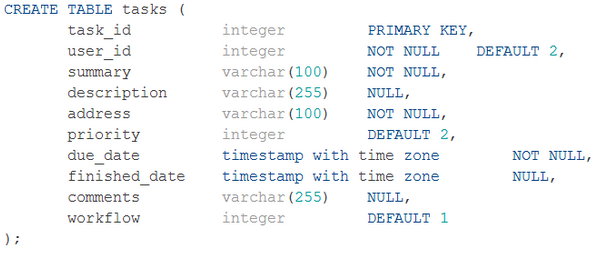This is another excerpt from this summer’s 31-page intern project report (PDF). All of this was written entirely by our interns, with only some editing feedback from professional Oasis Digital developers or managers.
BitBucket
BitBucket is an hosting site for the distributed version control systems Git and Mercurial. While using Git, BitBucket allowed the team to view each commit throughout the project and to see the differences made between each commit online. BitBucket is owned by Atlassian, the company that owns JIRA. Conveniently, this allows BitBucket and JIRA to interact. The team was able to simply reference the ID of a JIRA issue in a commit message, and a link was made between JIRA and the commit. The ID in the commit message becomes hyperlinked to the JIRA issue, and the JIRA issue has an option to view commit history for each issue [5].
Git
Git is a distributed version control system. In our project, it was specifically used as a source code management tool which allowed many people to collaborate on the same project. It was originally developed by Linus Torvalds for the Linux kernel which is a firm testament to the software’s efficiency and stability [6]. Our basic use case for Git is as follows: developers are assigned specific coding tasks, the developer pulls the current source code (in our case it was stored on BitBucket), makes changes to complete their given task, commits that specific changeset, and pushes these changes to the central repository. Other team members are then able to pull these changes and continue working on their specific tasks. An important item to note here is that, the majority of the time, Git automatically handled merging conflicts between versions of code which significantly automated the collaboration process.
JavaScript
JavaScript is one of the most prolific programming languages used in the world of software. JavaScript (JS) has become the standard scripting language of the web, creating widespread support from all modern browsers. The language was originally developed by Brendan Eich for use in Netscape. Despite its name, it bears no direct correlation with Java, but was named as an attempt to share the hype of Java. It possesses many deficiencies such as a global namespace, numerous idiosyncrasies in predication, and internal qualms pertaining to the use of prototypical or traditional class inheritance. However, at its heart, it has the ability to posses an elegant functional style. In JS, functions have first order status, and variables are dynamically typed which allows for a declarative programming style.
Heroku
Heroku is a cloud platform as a service (PaaS). It provides hosting for applications written in Java, Node.js, Clojure, Python, Ruby, and more. We utilized Heroku to publicly host our project. A Git repository and domain name is assigned when you create a new Heroku project. Code is easily pushed to the repository, and Heroku handles the rest. It automatically downloads and compiles the necessary modules listed in the package.json file and then deploys the application to the server. Heroku provides free minimal hosting that includes a domain name with a Hiroko extension. There is an option to use a domain name that has already been purchased [8]. We took advantage of the free hosting for this project and kept a free account up-to-date with our source code. You can find the Cerberus project hosted on Heroku at http://oasisdigital-cerberus.herokuapp.com/. Heroku was very easy to set-up and keep up-to-date with our current commits.
PostgreSQL
PostgreSQL is a relational database that uses the SQL database query language. The basic structure of a relational database is the table. A table consists of an arbitrary number of columns, each having a name and specified datatype to be stored within the corresponding cell. Users then inject rows into this table with values correlating to the various columns. The SQL protocol provides an intuitive interface for adding, manipulating, and retrieving information from within these tables [9]. In this project we had two tables: one to store the users and another for the tasks.

Socket.io
Socket.io is a JavaScript library that provides the ability to update data between clients in realtime. There are two parts to socket.io: the server and the client. The server half of the library is a Node.js module. Socket.io is event-driven. Socket.io uses the WebSockets protocol to keep a constant connection open between the server and client. If WebSockets is unavailable in the clients browser, socket.io seamlessly falls back to using either Adobe Flash sockets or long polling. The code does not need to be changed to support all of these methods [10]. The team used socket.io to update task and user data in realtime throughout the application. If any attributes of a task or user are edited on one client, all other clients will see the change instantly. The server sends an event after it changes the data in the database, and all clients receive the event. Although we only send events from the server, socket.io allows sending events from the client and receiving events on the server [10]. For our application, it is up to the client to determine whether the event is relevant to itself. For instance, non-managers are unable to get to the manager page in the application. Therefore there would be no need to update user information for an instance of a non-manager client. We also used socket.io to update the number of open and in progress tasks for each user, the manager order of the tasks, and whether a user is logged in or not. Socket.io was very easy to implement and use. It is very easy to comprehend the event-driven core of socket.io because it is made simple, and it closely represents the essence of the Node.js event system.
